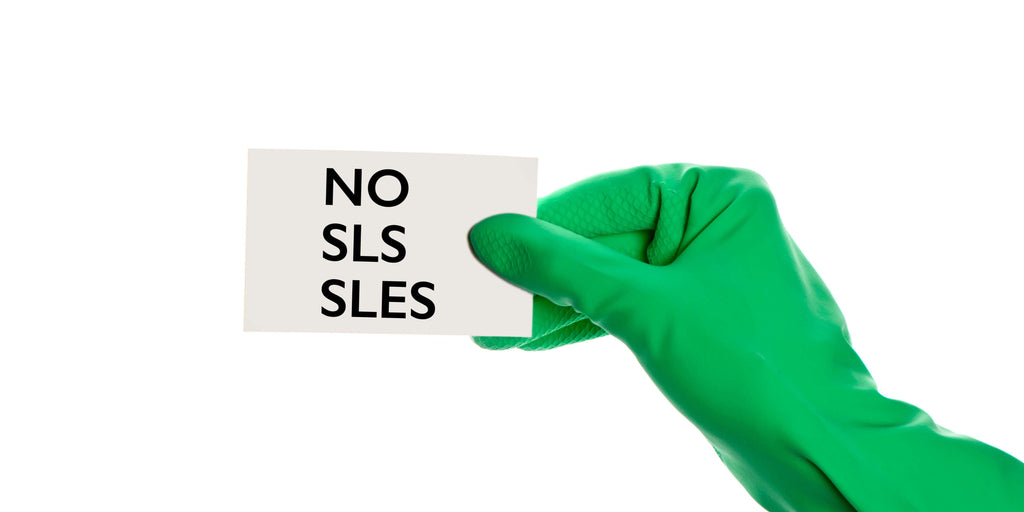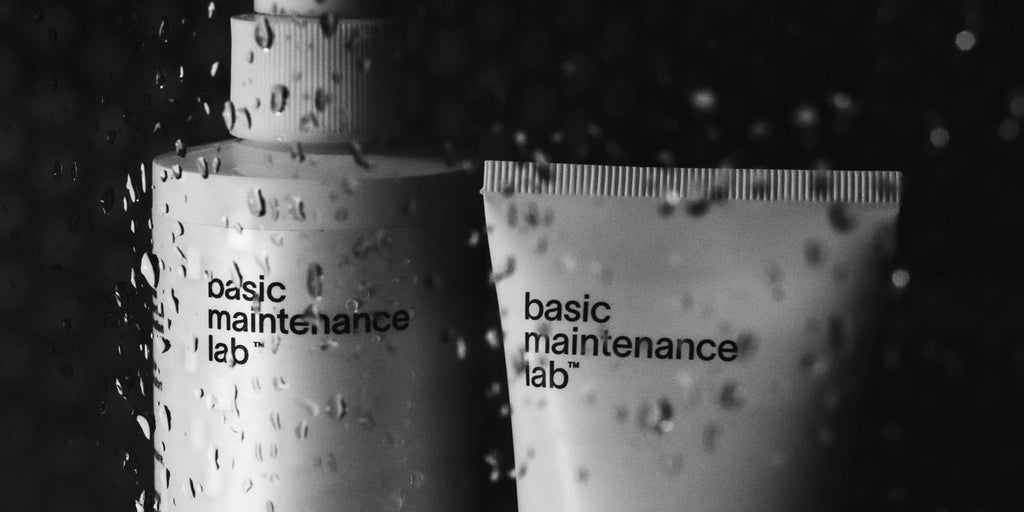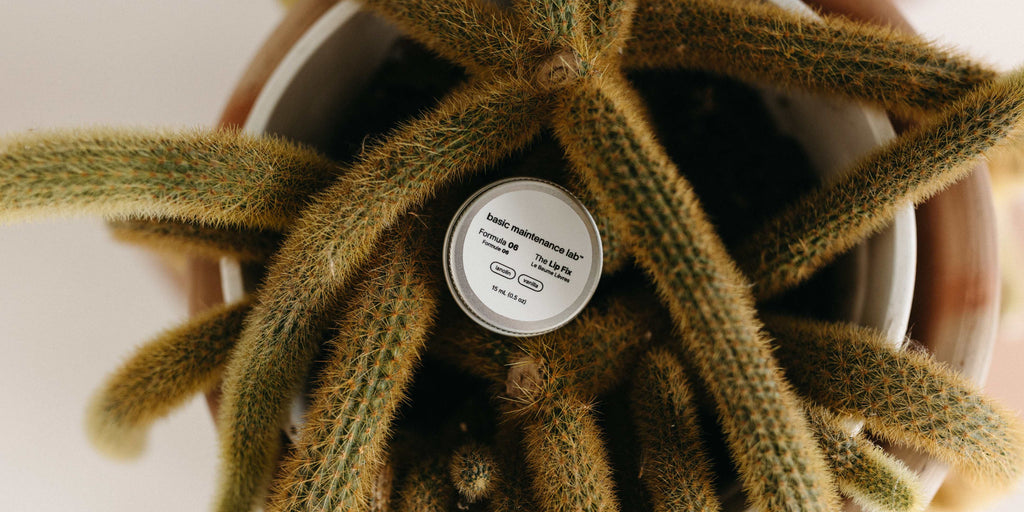The All-BS List of Product Claims: SLS FREE
It’s a type of sulfate. OK, what are sulfates? A class of cleansing surfactant. Great, what is a surfactant? Technically, it’s a portmanteau for “surface active agent”. Got it.
Anyways, for our purposes, cleansing surfactants are chemicals that stir up activity on the surface you are cleaning to help trap and remove dirt. Their molecular make-up is such that one portion cuts through water, and the other half through oil, so they can help remove dirt from your skin or hair..
SLS, which stands for Sodium Lauryl Sulfate , is very good at this. The best, actually. It is not to be confused with Sodium Laureth Sulfate (SLES), which people assume due to the closeness of their trade names. SLS is much stronger.
Both are produced from petroleum and plant sources such as coconut and palm oil.
You’ve probably only ever come across SLS when denoted by its ‘Free-From’ claim on products. There’s certainly no shortage of them. Ours included.
But are they bad for you? The short answer is ‘no, not really’. The long answer is ‘again, no, but bear with us’.
The most common refrains to backup SLS-Free claims are that they’re irritating, they’re carcinogenic, they’re drying, they’re eco-toxins, and they accumulate in your body.
Is SLS irritating?
Sure. What it isn’t? This myth is irritating. Yet here we are, talking about it.
When it comes to the products you might find it in - soaps, washes, shampoos, detergents - concentrations usually range from 0.01% - 50%. The upper range is typically found in household cleaning products - which obviously don’t have the same irritancy concerns as a personal care product that you directly apply to yourself. Plus, they generally need to be more effective cleansers.
Please note that just because SLS is used for industrial cleaners does not mean that it’s automatically bad for a personal care product - it’s the concentration of it that matters. As the saying goes, the dose makes the poison. Think of it like a beer versus the equivalent liquid volume in whiskey. That extra 35% of alcohol makes quite a difference, doesn’t it?
Anyways, yes, SLS is one of the more irritating surfactants out there. The problem is, it’s irritating if either used, or formulated improperly. Any chemist worth even half a pinch of salt will know this.
Any studies that demonstrate irritancy beyond the usual human sensitivities or allergies, have generally been done so out of context. For example, with soaps, washes, and shampoos, what do you do? You rinse them out. You wash them off. You don’t just sit there with soap all over you for an extended period of time. And yet that is exactly the type of study that has pointed to its irritancy and amplified its vilification.
And when it comes to formulation, rarely, if ever, is SLS used in a personal care product without a “co-surfactant” that helps stabilize it and counteract any potential irritation. Remember, brands want you to like their products. Skin irritation is generally not on their list of product qualities to check off.
Is SLS toxic?
The. Dose. Makes. The. Poison. Again, for the people in the back. Every chemical has a toxic dose. Table salt has a toxic dose.
“Acute Oral Toxicity” tends to be a major talking point when referencing SLS. This refers to the immediate danger of ingesting something, measured in terms of its median lethal dose, which is the amount needed to kill half of the lab rats getting that dose.
Do you plan on drinking body wash? If you do, maybe what it’s formulated with isn’t your biggest problem.
Is SLS carcinogenic or hormone disrupting?
No. There is absolutely no scientific evidence that supports this. There is nothing linking either SLS or SLES to cancer, infertifly or any developmental issues.
Is SLS drying?
As far as pure cleansing power goes, it’s among the most effective. So yes, it can dry out your skin, scalp or hair. It can strip it of its oils. If you have particularly dry skin, this would be a bit of a concern. However, one easily remedied by rehydrating and moisturizing.
Does SLS build up inside you?
While microscopic amounts can be absorbed if pure SLS is directly applied to your skin’s surface, even then, most of it just sits there. What might get absorbed is quickly metabolized by your liver and rapidly excreted. This is quite literally what your liver exists to do - detoxify you.
Is SLS eco-friendly?
If it’s derived from palm oil, the destruction of rainforests for plantations is a problem. When it comes to aquatic toxicity, i.e. the short-term negative impacts to aquatic life - extremely high levels of SLS can be mildly toxic. However, the diluted amounts in personal care products - not so much. Not to mention by the time it goes down the drain, through your municipality’s in/out water filtration systems, and finally reaching a natural water source - it’s largely been reduced to nothing. Oh, and it’s readily biodegradable.
So, should I avoid SLS?
No. But whether you choose to or not is entirely up to you. There’s no particular reason to avoid them unless you have an individual sensitivity towards them. It does not pose any risk to you or the environment if used correctly. If you find it too drying for your skin or hair, you are free to choose “Free From” products. But, if you have some products that contain SLS and you like them, don’t let all the bullshit scare you away.
Does Basic Maintenance use SLS?
No. But we could, and quite frankly, we should. It would be more cost-effective. This just happens to be an instance of fear-mongering that has prevailed to the point it’s nearly impossible for young, start-up brands to risk using them.
Public perception and consumer demands - no matter how misguided they may be - are still real factors to consider when formulating a product. With a strong majority of consumers still convinced about the harmful effects of SLS, we felt it necessary to avoid it.
Once we have some more clout, maybe we’ll reconsider.
Sources
Bondi C et al. (2015) Human and Environmental Toxicity of Sodium Lauryl Sulfate (SLS): Evidence for Safe Use in Household Cleaning Products.Environ Health Insights. 2015; 9: 27–32. https://www.ncbi.nlm.nih.gov/pmc/articles/PMC4651417/
Cosmetic Ingredient Review (CIR). Final report on the safety assessment of sodium lauryl sulfate and ammonium lauryl sulfate. Int J Toxicol. 2005; 24(1): 1–102. https://journals.sagepub.com/doi/abs/10.3109/10915818309142005
Green, K. Johnson, R.E. Chapman, J.M. Nelson, E. Cheeks, L. Preservative effects on the healing rate of rabbit corneal epithelium. Lens Eye Toxic Res. 1989; 6: 37–41. https://pubmed.ncbi.nlm.nih.gov/2488029/
Gloxhuber, C. Künstler, K. Anionic Surfactants: Biochemistry, Toxicology, Dermatology. 2nd ed., Vol. 43. New York: Marcel Dekker; 1992. https://lib.ugent.be/en/catalog/rug01:000316118
Horita K et al. (2017) Effects of different base agents on prediction of skin irritation by sodium lauryl sulfate using patch testing and repeated application test. Toxicology 382:10-15. https://pubmed.ncbi.nlm.nih.gov/28274658/
De Jongh, C.M. Verberk, M.M. Withagen, C.E. Jacobs, J.J. Rustemeyer, T. Kezic, S. Stratum corneum cytokines and skin irritation response to sodium lauryl sulfate. Contact Dermatitis. 2006; 54(6): 325–33. https://pubmed.ncbi.nlm.nih.gov/16787454/
Lewis, M.A. Chronic and sublethal toxicities of surfactants to aquatic animals: a review and risk assessment. Water Res. 1991; 25(1): 101–13. https://citeseerx.ist.psu.edu/viewdoc/download?doi=10.1.1.458.9723&rep=rep1&type=pdf
Karsa, D.R. Porter, M.R. , eds. Biodegradability of Surfactants. Glasgow: Blackie Academic & Professional; 1995. https://chempedia.info/info/biodegradability_of_surfactants/
Mizutani T et al. (2016) Sodium Lauryl Sulfate Stimulates the Generation of Reactive Oxygen Species through Interactions with Cell Membranes. J Oleo Sci. 65(12):993-1001. https://pubmed.ncbi.nlm.nih.gov/27829611/



